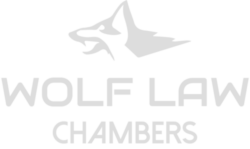PUBLIC SPEAKING
Top 5 Legal Case Management Apps for Lawyers & Paralegals
📅 Reading Time: 2 minutes
Staying organized in a fast-paced legal environment can be a challenge—but the right case management software can transform your workflow. Whether you’re a solo practitioner, paralegal, or part of a larger law firm, here are 5 standout legal case management apps making waves in 2025:
1. Clio
Clio remains a top choice thanks to its intuitive interface, robust features, and cloud accessibility. It handles case tracking, billing, document management, and even integrates with tools like Zoom, Outlook, and QuickBooks.
🔑 Best for: All-in-one practice management for firms of any size.
2. PracticePanther
Sleek, powerful, and mobile-friendly—PracticePanther automates many time-consuming tasks. It offers built-in time tracking, calendaring, client intake forms, and a secure client portal.
🔑 Best for: Tech-savvy firms looking for automation and flexibility.
3. LEAP
LEAP is a cloud-based platform ideal for small to mid-sized law firms. It includes legal document templates, time tracking, billing, and even a mobile app—perfect for lawyers on the go.
🔑 Best for: Small firms focused on efficiency and mobility.
4. MyCase
Known for its clean user experience, MyCase supports client communication, scheduling, billing, and document sharing all in one place. Their customer support also gets high marks.
🔑 Best for: Firms seeking a user-friendly, client-centric platform.
5. CosmoLex
CosmoLex stands out for combining practice management and legal accounting in one system—no need for QuickBooks. It’s ideal for firms looking for a true “all-in-one” platform.
🔑 Best for: Firms that want integrated accounting and compliance tools.
Coworking for Corporate vs. Solo Lawyers: How to Find the Right Fit ⚖️
As coworking spaces continue to evolve, more legal professionals—both solo and corporate—are turning to shared workspaces for flexibility, community, and convenience. But not all coworking environments are created equal. Here’s how to find the right fit, whether you’re a solo practitioner or part of a larger legal team.
🧑⚖️ Solo Lawyers: Community + Credibility
Solo lawyers often juggle multiple roles—lawyer, admin, marketer, you name it. A well-designed coworking space can help ease the load by offering:
- Professional meeting rooms to meet clients with confidence
- Networking opportunities with fellow professionals
- Administrative support like reception services and mail handling
- Flexible memberships tailored to fluctuating caseloads
These spaces foster connection while still allowing you to maintain independence.
🏢 Corporate Lawyers: Privacy + Productivity
For in-house or firm-based lawyers, priorities look a bit different. The ideal coworking setup should offer:
- Private offices or team suites for confidential discussions
- Reliable tech infrastructure to support secure communication
- Quiet zones to focus on complex matters without distractions
- Proximity to key business districts or courthouses
Hybrid teams especially benefit from coworking models that allow seamless collaboration while cutting down on overhead.
🎯 The Bottom Line
Choosing the right coworking space depends on your unique workflow and needs. Whether you thrive in a buzzing legal hub or prefer a quieter, more private setup, the goal is the same: support your practice, boost your productivity, and help you deliver your best work.
Want help finding a legal-focused coworking space that fits your needs? Let’s connect! 👇
#LegalProfessionals #CoworkingForLawyers #SoloLawyerLife #CorporateLaw #LegalTech #LegalProductivity #WolfLawChambers
Creating a Work-Life Balance in the Legal Industry.
The legal profession is known for its demanding workload, long hours, and high-pressure environment. But while dedication is essential, so is balance. Without it, burnout becomes inevitable. Here’s how legal professionals can maintain a healthier work-life balance while excelling in their careers.
1. Set Boundaries
It’s easy to let work consume your personal time, especially when cases or clients require urgent attention. Define clear working hours and communicate them to colleagues and clients to prevent work from creeping into your personal life.
2. Prioritize and Delegate
Not everything needs your direct involvement. Prioritize tasks based on urgency and importance, and delegate responsibilities where possible. Leveraging support staff and legal technology can help streamline work and reduce unnecessary stress.
3. Embrace Technology
Use legal tech tools to automate repetitive tasks, manage case files efficiently, and improve client communication. This reduces time spent on administrative work, allowing you to focus on high-value tasks—and personal time.
4. Make Time for Yourself
Whether it’s a workout, a hobby, or time with loved ones, scheduling personal activities is just as important as work meetings. Treat these commitments with the same level of importance.
5. Seek a Supportive Work Environment
A firm or workspace that values well-being can make all the difference. Choose a professional setting that encourages flexibility and understands the importance of mental health and time management.
Creating a work-life balance in the legal field isn’t just about working less—it’s about working smarter. Small, intentional changes can lead to greater productivity, job satisfaction, and overall well-being.
How Workflow Automation Apps Save Time for Busy Law Firms
In today’s fast-paced legal industry, efficiency is a necessity. Law firms juggle tasks like case management, document drafting, client communication, and billing. Workflow automation apps streamline operations, saving time for what matters most—delivering exceptional legal services.
Time-Saving Benefits for Law Firms
- Document Management: Automation apps organize, store, and retrieve files quickly by tagging them by case or client.
- Client Communication: Tools can send reminders, schedule appointments, and handle routine inquiries, ensuring timely updates.
- Billing and Payments: Automation generates invoices, sends payment reminders, and processes payments seamlessly.
- Task Management: Assign tasks, set deadlines, and get notifications to stay on track.
- Compliance: Automation ensures filing deadlines and data storage meet regulatory standards, reducing risks.
Final Thoughts
Automation empowers legal teams by eliminating repetitive tasks, allowing them to focus on clients and complex legal matters. Ready to save time and boost efficiency? Share your experiences in the comments!
Essential Amenities for Lawyers in Coworking Spaces
Coworking spaces are becoming increasingly popular among legal professionals, offering flexibility, cost efficiency, and a professional environment. However, not all coworking spaces cater to the unique needs of lawyers.
Here are some essential amenities to look for in a coworking space tailored for legal professionals:
✅ Private Meeting Rooms – Confidentiality is key for client consultations and legal discussions. Ensure the space offers soundproof rooms.
✅ Secure Storage Options – Lockable cabinets or secure cloud solutions to protect sensitive client information.
✅ High-Speed Internet – Reliable connectivity is essential for research, court filings, and video calls.
✅ Printing and Scanning Facilities – Easy access to these services for handling legal documentation efficiently.
✅ Professional Ambiance – A polished, quiet environment to maintain credibility with clients and stay focused on intricate legal work.
✅ On-Demand Legal Software – Some coworking spaces provide access to tools like Westlaw or LexisNexis for research.
✅ Community Networking – Opportunities to connect with other professionals can lead to collaboration or referrals.
Coworking spaces that cater to these needs empower lawyers to work smarter and serve their clients better.
The Future of Law Offices in Ontario: Hybrid, Remote, and Shared Spaces
The legal profession in Ontario is undergoing a profound transformation, driven by technological advancements, changing client expectations, and the evolving work culture. As we look ahead, law offices are no longer defined solely by their physical spaces. Hybrid models, remote work, and shared office environments are becoming increasingly popular options for law firms and professionals. Here’s a look at the future of law offices in Ontario.
1. The Rise of Hybrid Work Models
The hybrid work model—combining in-office and remote work—has gained significant traction in Ontario’s legal sector. Law firms are realizing the potential of this flexible approach, allowing lawyers and support staff to balance in-person collaboration with the convenience of working from home.
For many law professionals, hybrid work offers increased productivity, better work-life balance, and the ability to tap into a broader talent pool. This shift also reflects client preferences for streamlined communication and services that are accessible no matter where their lawyer is based. Technology tools such as cloud-based legal management platforms and secure video conferencing have made it easier to work seamlessly across different environments.
2. Remote Work: Efficiency with Flexibility
Remote work is no longer just a temporary solution; it is becoming a long-term fixture in the legal landscape. With the ability to conduct client meetings, research, and file management remotely, law firms are finding that remote work enhances efficiency and reduces overhead costs associated with maintaining large office spaces.
Ontario’s law professionals are increasingly adopting flexible work arrangements that allow them to manage their practice from virtually anywhere. Whether working from home, a coffee shop, or a co-working space, remote work offers a level of autonomy that fosters a more dynamic and productive workforce.
3. Shared Office Spaces: The Flexible Solution
Shared office spaces, also known as coworking spaces, are making a strong impact in Ontario’s legal community. These spaces offer flexibility, affordability, and an environment conducive to collaboration. For small law firms or solo practitioners, shared spaces provide access to high-quality office amenities—such as meeting rooms, high-speed internet, and administrative support—without the burden of long-term leases or the responsibility of maintaining an office.
Moreover, shared spaces offer a sense of community and networking opportunities, with professionals from various industries coming together. This can lead to valuable referrals and collaborations that benefit both clients and legal professionals.
4. Client-Centric Approaches in Law Office Design
As the legal sector embraces hybrid, remote, and shared spaces, the focus is shifting to client-centric approaches in office design. In-person consultations may become less frequent, but when clients do visit, law offices need to provide a welcoming, efficient, and professional environment.
Innovative law firms are reimagining their office layouts to accommodate the needs of both lawyers and clients. Some are adopting tech-savvy spaces equipped with virtual consultation rooms, while others are designing more informal, collaborative spaces that foster open communication and trust. In an age where clients expect more than just legal advice, the physical space is becoming a reflection of a firm’s commitment to modern service delivery.
5. Challenges and Opportunities Ahead
While the shift toward hybrid, remote, and shared spaces offers numerous benefits, it also presents challenges. Law firms must prioritize data security and confidentiality when working remotely or in shared spaces. Ensuring that client information remains protected in a digital-first world is a top priority for firms looking to maintain client trust.
Additionally, maintaining firm culture and team cohesion can be challenging when some employees are working remotely or in different locations. Firms will need to invest in technology to bridge the gap, create opportunities for virtual team-building, and ensure that collaboration remains effective.
Conclusion
The future of law offices in Ontario is undoubtedly evolving, with hybrid, remote, and shared spaces at the forefront of this transformation. Law firms are embracing flexibility and adapting to the needs of both clients and legal professionals. As the legal sector continues to innovate, it’s clear that a more dynamic, accessible, and client-focused approach to law office design and operations is on the horizon.
Whether working remotely from a home office or collaborating in a shared space, Ontario’s legal professionals are setting the stage for the future of the profession—one that is agile, efficient, and responsive to the needs of a rapidly changing world.
A Guide to Managing Client Meetings in Shared and Virtual Offices
With the rise of remote work, many professionals are conducting client meetings from shared or virtual offices. These spaces are often convenient and cost-effective, but they come with unique challenges that can impact your ability to make a good impression and run a smooth meeting. Here’s a quick guide to effectively managing client meetings in these environments.
1. Plan the Logistics in Advance
- Reserve a Private Space: In shared offices, always book a private room for your meetings. Check for any policies on noise and client usage so you can confidently handle your conversation.
- Test Equipment: If using video conferencing, verify that all technology is working beforehand. Poor audio or visual quality can create a frustrating experience for clients.
- Send Clear Details: For virtual meetings, share the access link, password, and any meeting agenda with clients in advance. Providing clear instructions on how to join minimizes technical issues.
2. Create a Professional Atmosphere
- Declutter the Background: Whether in a shared office or virtual setup, a neat background is essential. It conveys professionalism and keeps the client focused on you, not distractions.
- Dress Appropriately: Even in virtual settings, dress in a professional or business-casual attire. A polished look reinforces that you take the meeting—and the client—seriously.
- Control Background Noise: Use noise-canceling tools or features to minimize disruptions. Some virtual offices offer noise-dampened rooms; if available, take advantage of this.
3. Set Clear Meeting Objectives
- Define Purpose and Goals: Start the meeting by outlining the goals to help clients understand what you aim to achieve. This sets a clear roadmap and maximizes efficiency.
- Prepare an Agenda: An agenda helps guide the discussion and ensures you cover all critical points without going off track. It also demonstrates that you’ve put thought into the meeting.
4. Use Effective Communication Tools
- Share Visual Aids: For virtual meetings, screen sharing can be a powerful tool for showing presentations or documents. In shared office settings, make use of any whiteboards or display screens available.
- Take Notes and Summarize Key Points: This helps maintain clarity, especially when complex topics are discussed. Summarize main takeaways at the end to confirm everyone is on the same page.
5. Follow Up After the Meeting
- Send a Summary: A brief summary email of discussed points and next steps shows professionalism and reinforces the meeting’s goals.
- Seek Feedback: Ask if the client had any concerns with the format or if improvements could be made. This demonstrates a commitment to a client-focused approach.
With a few intentional steps, you can overcome the challenges of shared and virtual offices and create a smooth, professional experience for your clients. Planning, communication, and professionalism will ensure your client meetings leave a lasting positive impression.
Take Your Presentation Skills to the Next Level with These Tips and Tricks
Ever felt nervous while delivering a presentation in front of 5 people? How about 20? Perhaps a 100? What about 1000 or more? Because I surely have! We prepare countless hours to present in front of a crowd, speak in front of the mirror, create que cards, rehearse with and without them, and/or memorize our presentation but still end up losing confidence and getting nervous when the lights shine bright. It doesn’t have to be that way, since it is definitely within our power to change the way we perceive our audience and the way they perceive us. We are fully capable of conveying the message we want and addressing our crowd with glowing confidence each and every time we deliver a presentation. Doing so can surely generate the results we desire and steer us in a direction of accomplishing our aims when presenting.
Max Beaumont, founder of Potato Chip Communications, helps individuals with their public speaking and communication skills through coaching and consulting. His presentation on Presentation Skills for Lawyers was very insightful and thorough in advancing my awareness on how to become a better public speaker and communicate more effectively with my audiences. Throughout his findings, he has come up with a few concepts that are sure to enhance one’s presenting and public speaking abilities.

Mindset
Max spoke on the importance of one’s mindset as a presenter. He said that in order to evoke confidence and energy, one has to focus on how they are helping their audience. This notion creates synergy between the audience and speaker, and your audience will pay attention to what you have to say because you are initiating a sense of care for them. In preparation for your presentation, it is essential that you constantly reflect on how you may be able to help your audience and convey this to them as well. This in turn reciprocates the same effect back and you are able to effectively communicate with your audience.

Body Language
In terms of communication, enough stress cannot be placed on the significance of body language. Max broke down the communication formula with words equating to 7%, tone equalling 38%, and body language being the highest totalling 55%. Our body language conveys more information about us than any other factor so we must pay attention to what we are ‘saying’ even though we may not say a word. Confidence through eye contact, gestures, posture, and your facial expressions will leave an everlasting impact on your audience and convey to them that you care and want to help them.

Audience Interaction
Another critical approach to enhance audience interaction is the remembrance of names. According to Max, name memory involves the following:
- Have a Why
- Be Present
- Repeat Name Out Loud
- Repeat Name In Your Head
By doing so, you are getting members of your audience directly involved in the presentation and establishing a personal connection.
Direct engagement with your audience group also involves asking questions and addressing them by their name. These questions should be relevant to your topic and easy to answer. When asking a question, limit it to a response of a simple yes or no.

Simple & Relevant Messages
As Max outlined, “If you confuse people, you lose people”. Due to short attention spans, keeping people engaged in your presentation is extremely difficult if you do not keep things simple. Avoid jargon and unnecessary words, use relevant examples wherever you can, and above all, simplify the message best you can. There is a reason Albert Einstein once said, “If you can’t explain it simply, you don’t understand it well enough”.

Tone & Delivery
When presenting, be authentic and do not act as if you are a salesperson trying to sell something. Treat the presentation as a normal conversation with the audience. Be inclusive and use references your audience may know. This gains their attention and allows them to relate with you. This forms an understanding and when people sense that you understand them, they are inclined to listen to what you have to say. When addressing you audience, use familiar words and language that they are used to hearing.
Additionally, your tone is equally as important to delivering a powerful presentation. If you are monotone, your audience perceives you are boring, and they will probably disengage immediately. Genuine conversations have changes in pitch patterns and enable our audience to become more interested in our presentations. Your confidence and excitement is revealed through your tone and if you present yourself in such a manner, your audience will definitely feel it.

See It In Action
Incorporate these techniques in your next presentation and I guarantee you will surprise yourself with the results you encounter. Are you still not sure about how you can apply these methods for yourself? Come and visit Wolf Law Chambers for a presentation and see how we implement these techniques to perfection. Come out to 90 Matheson Blvd. West, Suite 101 in the heart of Mississauga to tell us about yourself and learn a few strategies for your next presentation. We are hosting an in-depth seminar on what a Law Society of Ontario audit looks like and how you can prepare your practice to be audit ready. We welcome you to RSVP for our Surviving the Audit event taking place on October 10th, 2019 from 6-8 p.m.
-Narvir Goindi








